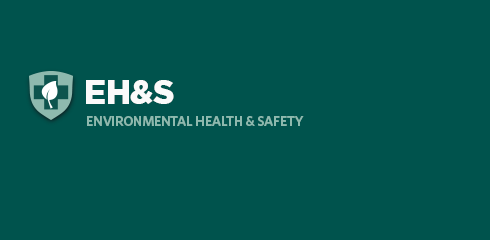Radiation & Laser Safety: Materials Procurement, Use, & Disposal
Radiation and Laser Safety
OSHA defines radiation as energy traveling through space. Non-ionizing radiation is essential to life, but excessive exposures will cause tissue damage. All forms of ionizing radiation have sufficient energy to ionize atoms that may destabilize molecules within cells and lead to tissue damage.
Institutions with radioactive materials have an Institutional Radiation Safety Committee, which oversees radiation safety. Please contact your institution’s Radiation Safety Committee for more information on your institution’s radiation safety program.
Radiation sources are found in a wide range of educational settings. If radiation is not properly controlled it can be potentially hazardous to the health of workers. There are two types of radiation: non-ionizing and ionizing.
Non-ionizing
Non-Ionizing Radiation is relatively low-energy radiation that does not have enough energy to ionize atoms or molecules. Most non-ionizing radiation, such as radio and microwave energy, is considered harmful only to the extent of the amount of heat energy it transfers to whatever it hits. This is, in fact, the way that microwaves cook food. UV light is unique in that while it is non-ionizing, it does have the capacity to cause harmful effects similar to what ionizing radiation can create, such as an increased risk of cancer due to damage to DNA molecules.
Ionizing
Ionizing radiation, which is caused by unstable atoms giving off energy to reach a more stable state, is more of a health threat to humans because it involves changing the basic makeup of atoms in cells, and more specifically the DNA molecules inside of cells. It does, of course, take a very strong dose of radiation to substantially damage a cell’s structure, as there can be trillions of atoms in a single cell.
Laser Safety
LASER is an acronym which stands for Light Amplification by Stimulated Emission of Radiation. Laser safety is safe design, use and implementation of lasers to minimize the risk of laser accidents, especially those involving eye injuries. Since even relatively small amounts of laser light can lead to permanent eye injuries, the sale and usage of lasers is typically subject to government regulations.
Moderate and high-power lasers are potentially hazardous because they can burn the retina of the eye, or even the skin. To control the risk of injury, various specifications define “classes” of laser depending on their power and wavelength. These regulations also prescribe required safety measures, such as labeling lasers with specific warnings, and wearing laser safety goggles when operating lasers.
Depending on the laser class, the safety requirements vary. The lower number corresponds to less safety precautions. Class 3B and 4 lasers must be registered with the MADPH. Below is a list of the laser classes:
- Class 1 lasers are considered to be incapable of producing damaging radiation levels, and are therefore exempt from most control measures or other forms of surveillance. Example: laser printers.
- Class 2 lasers emit radiation in the visible portion of the spectrum, and protection is normally afforded by the normal human aversion response (blink reflex) to bright radiant sources. They may be hazardous if viewed directly for extended periods of time. Example: laser pointers.
- Class 3 lasers
- Class 3a lasers are those that normally would not produce injury if viewed only momentarily with the unaided eye. They may present a hazard if viewed using collecting optics, e.g., telescopes, microscopes, or binoculars. Example: HeNe lasers above 1 milliwatt but not exceeding 5 milliwatts radiant power.
- Class 3b lasers can cause severe eye injuries if beams are viewed directly or specular reflections are viewed. A Class 3 laser is not normally a fire hazard. Example: visible HeNe lasers above 5 milliwatts but not exceeding 500 milliwatts radiant power.
- Class 4 lasers are a hazard to the eye from the direct beam and specular reflections and sometimes even from diffuse reflections. Class 4 lasers can also start fires and can damage skin.



 Hot Topics
Hot Topics